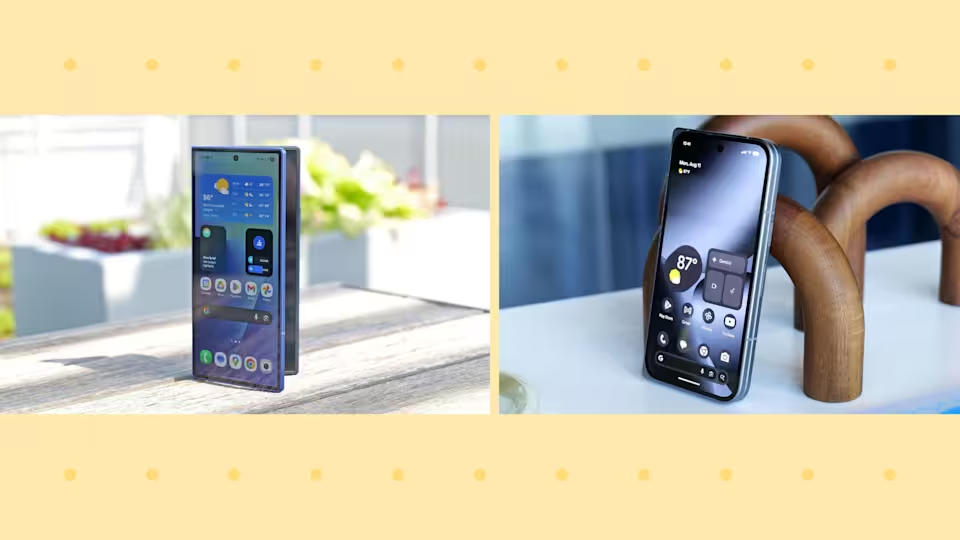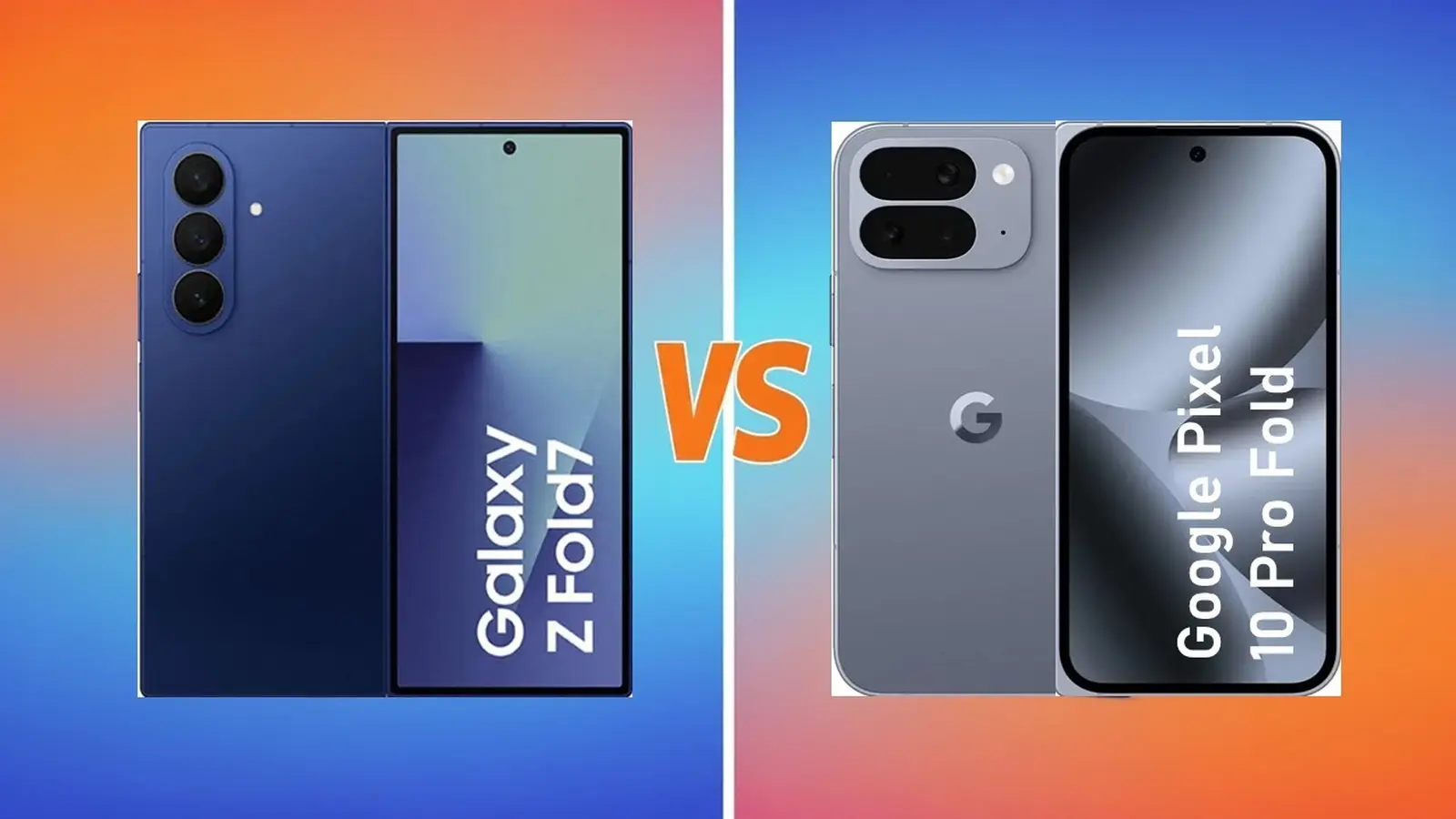7 Minutes
A new era for premium foldables
Samsung’s Galaxy Z Fold 7 set the benchmark for book-style foldables when it launched last month, but Google’s freshly announced Pixel 10 Pro Fold arrives as a serious contender. With similar form factors and divergent strengths—Samsung's years of foldable refinement versus Google’s deep Gemini AI integration and updated hardware—these two devices are the current frontrunners in the foldable market. Below we break down how the Pixel 10 Pro Fold and Galaxy Z Fold 7 compare across design, display, performance, battery, camera and practical use cases.
Price and market positioning
Price remains one of the most decisive factors for buyers. Google has positioned the Pixel 10 Pro Fold as the more affordable premium foldable, starting at $1,799. Samsung’s Galaxy Z Fold 7 begins at $2,000. Both phones are offered in multiple storage tiers, but the price gap at launch gives Google a competitive edge for value-focused buyers who still want high-end foldable features.
Design and dimensions
Both devices follow the familiar book-style foldable blueprint, but with slight differences in size and weight that affect pocketability and one-handed use.
Dimensions and weight
When unfolded, both phones feature an 8.0-inch inner display. Samsung edges ahead in overall footprint efficiency—its internal 8-inch canvas fits into a chassis that’s roughly 0.3 inches smaller in one dimension, making the Galaxy Z Fold 7 slightly more compact when open. Externally, the Z Fold 7’s cover display measures 6.5 inches versus the Pixel's 6.4-inch outer screen. Height differences are minimal (Pixel 10 Pro Fold at ~6.1 inches, Galaxy Z Fold 7 at ~6.2 inches).
Notably, Samsung shaved weight with the Z Fold 7 at about 7.6 ounces, lighter than Google’s Pixel 10 Pro Fold at roughly 9.1 ounces. That weight difference can be noticeable during extended single-handed use or while typing in tablet mode.
Displays and materials
Both foldables use premium panel technology with ultra-thin glass and top-tier protective coatings.
Pixel 10 Pro Fold display
Google upgraded the Pixel 10 Pro Fold to a Super Actua Flex OLED display with ultra-thin glass, pairing both front and back surfaces with Corning Gorilla Glass Victus 2. The Pixel emphasizes high color fidelity, fold durability improvements, and polished software scaling for large-screen productivity.

Galaxy Z Fold 7 display
Samsung deploys Dynamic AMOLED panels on both inner and outer displays, and mixes Corning Gorilla Glass Ceramic 2 on the front with Gorilla Glass Victus 2 on the back. Samsung has also increased the effective glass thickness relative to previous models for durability—still ultra-thin, but stronger—and tuned its displays for peak brightness and adaptive refresh behavior.
Performance: chips, RAM and storage
Both phones are engineered for flagship performance, but they take different approaches to silicon and memory configuration.
Chipsets
The Pixel 10 Pro Fold runs on Google’s Tensor G5 platform, which Google claims delivers approximately 34% CPU performance improvement over the prior-gen Tensor G4. The Galaxy Z Fold 7 ships with Qualcomm’s Snapdragon 8 Elite for Galaxy, a high-performance SoC optimized for sustained workloads, gaming and thermal efficiency.

RAM and storage
Storage options mirror one another: 256GB, 512GB and 1TB. Google offers a consistent 16GB of RAM across all Pixel 10 Pro Fold models. Samsung reserves 16GB for the top 1TB tier, while the lower-capacity Z Fold 7 configurations come with 12GB of RAM. That memory strategy affects multitasking and long-lived app state in tablet mode—Pixel offers uniform performance across the lineup, while Samsung differentiates tiers to incentivize higher-capacity purchases.
Battery life and charging
Battery capacity and charging capabilities are key for mobile-first productivity on foldables.
Battery sizes and endurance
The Pixel 10 Pro Fold houses a larger 5,015mAh battery, which Google rates for up to roughly 30 hours of mixed use under certain conditions. Samsung’s Galaxy Z Fold 7 contains a 4,400mAh battery and is rated around 24 hours, but real-world runtime will depend on display usage, refresh rates and connectivity.
Wireless and ecosystem charging
Google’s Pixel Fold is certified for Qi2 wireless charging and is introducing the "Pixelsnap" branding across its 2025 Pixel family. Samsung continues to support fast wired and wireless charging standards across its foldable line, with ecosystem advantages if you already use Galaxy accessories.
Software, AI and productivity
Software experience is a major differentiator. Google brings deep Gemini AI integrations to the Pixel 10 Pro Fold, embedding conversational assistants, generative features and context-aware workflows throughout the UI. Samsung leverages decades of One UI refinement for large-screen multitasking—split-screen apps, floating windows and refined task continuity between the cover and inner displays.
For professionals and power users, the Pixel’s AI-driven features may accelerate content creation, summarization and search tasks, while Samsung’s matured multitasking tools and app optimization provide a highly polished tablet-like productivity experience.
Use cases and advantages
Which device is better depends on priorities:
- For AI-first workflows, generative features and consistent high RAM across configurations: Pixel 10 Pro Fold.
- For a lighter device with refined large-screen UI, slightly more compact unfolded footprint and peak display tuning: Galaxy Z Fold 7.
- For cost-conscious buyers who still want flagship foldable hardware: Pixel’s lower starting price is attractive.
- For those invested in Samsung’s ecosystem—Galaxy Watch, Galaxy Tab, Samsung DeX-style continuity—the Z Fold 7 offers cohesive integration.
Colors, availability and market relevance
Color choices are another visible distinction. Samsung offers Mint (online-only), Jetblack, Blue Shadow and Silver Shadow—giving buyers more personalization options. Google’s Pixel 10 Pro Fold launches in Moonstone and Jade, leaning on minimalist, premium finishes.
In terms of the broader market, these launches highlight maturity in the foldable category. Samsung’s long-standing investment in foldable engineering continues to pay dividends in reliability and display tech, while Google’s rapid iteration and AI-first strategy have closed the gap quickly.
Final verdict: Which foldable should you pick?
If you prioritize cutting-edge generative AI, a bigger battery and lower entry price, the Pixel 10 Pro Fold is the compelling choice. If you want a lighter device, slightly more compact open size and Samsung’s proven One UI multitasking polish, the Galaxy Z Fold 7 remains the top pick. Either way, both phones demonstrate the mainstream viability of the foldable form factor and will push mobile productivity, creative workflows and flagship hardware expectations forward.
For users deciding between them, consider storage and RAM needs, whether you value wireless charging standards like Qi2, and how important weight and compactness are for your daily carry. Both devices set new benchmarks for foldable phones in 2025 and are integral to how the market will evolve over the next generation of mobile hardware.
Source: engadget


Leave a Comment